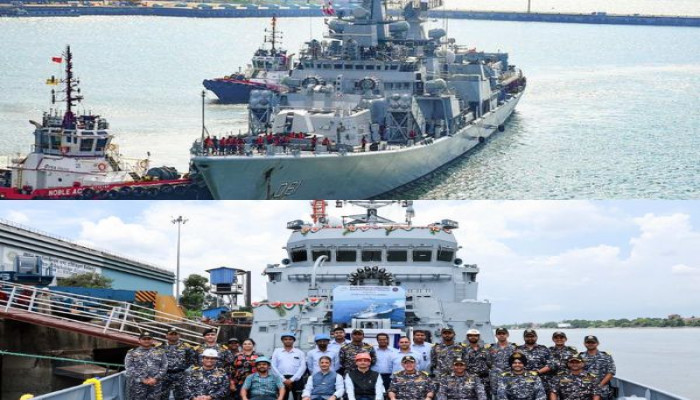Indian Navy undertakes biggest shipbuilding drive with 54 vessels under construction
- In Reports
- 06:30 PM, Sep 23, 2025
- Myind Staff
The Indian Navy is in the middle of its largest-ever shipbuilding programme, with 54 warships being built at different stages across domestic shipyards, The Hindu reported. This effort lies at the core of India’s long-term maritime vision of becoming self-reliant while preparing for regional security challenges from China and Pakistan.
Senior officials have confirmed that several of these vessels are close to completion, with up to 10 ships scheduled to be commissioned by December 2025. All 54 warships now under construction are expected to be part of the fleet by 2030, ensuring steady growth in India’s naval strength.
India has set a target of operating more than 200 frontline warships and submarines by 2035, with projections suggesting the number could rise to 230 platforms by 2037. This expansion will give the Navy a stronger capacity to safeguard national interests and keep vital sea lanes secure in the Indian Ocean Region.
The shipbuilding drive is directly tied to the government’s Atmanirbhar Bharat mission, which stresses domestic production. These projects are creating large-scale employment and boosting growth across supporting defence industries, adding strength to India’s naval-industrial base.
Reflecting this shift, officials describe the Navy’s transformation from a "Buyer’s Navy" to a "Builder’s Navy." The indigenously produced platforms are now made with more than 80 per cent local content, marking a sharp cut in import dependence and a stronger push for defence autonomy.
A symbolic milestone was reached on July 1 with the commissioning of INS Tamal, a Russian-built Krivak-class stealth multi-role frigate. It was the last major warship to be built abroad, bringing an end to decades of dependence on foreign shipyards.
Indigenous progress was further highlighted by the delivery of Androth, the second in a series of eight Anti-Submarine Warfare Shallow Water Craft being built by GRSE in Kolkata. The ship, designed with high levels of local content, shows India’s ability to design and produce complex naval platforms.
The Navy has positioned itself as the "first responder" and the "preferred security partner" in the Indian Ocean Region, with its modernisation drive supporting the SAGAR strategy, which stands for Security and Growth for All in the Region. Strengthening partnerships, improving security, and building regional cooperation remain central to this mission.
The induction of a large number of domestically built warships will not only reinforce India’s maritime security but also mark a major step towards full self-reliance in warship construction by the next decade. It signals a decisive phase in India’s transformation into a leading maritime power.







Comments